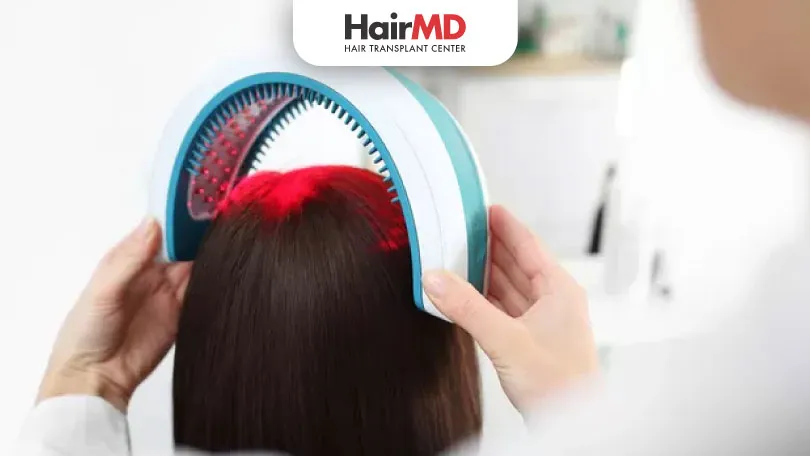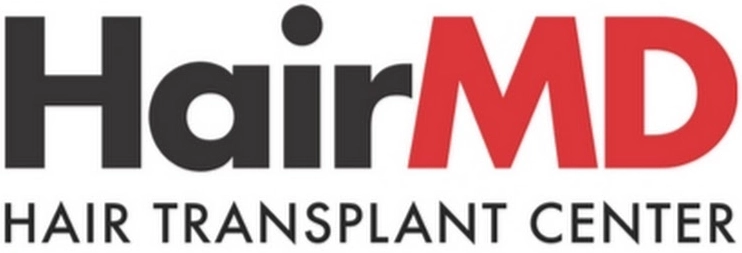24th Aug, 2023

What’s covered in the article?
- How does low-level laser therapy work?
- How is low-level laser hair therapy administered?
- Who is the best candidate for low-level laser therapy for hair loss?
- Benefits of Laser Hair Regrowth
- Conclusion
How does low-level laser therapy work?
Low light laser therapy for hair is also known as red light therapy and cold laser therapy. This procedure includes photon radiation that penetrates the scalp tissues. These photons help strengthen weak cells and encourage healthy hair growth. The procedure is quite popular to treat hair thinning and receding hairlines. It is safer, non-invasive than hair transplant surgery, and tolerable.
The theory behind low-level light therapy hair is that the low-doses trigger circulation within the scalp and encourage hair follicle growth.
The LLLT devices used to treat hair loss have diodes that emit infrared light. These rays penetrate the scalp. The wavelength of infrared light is 630-670 nanometers. These devices are available as:
- In-salon hoods or overhead panels
- Bonnet or head caps
- Hand-held devices.
Some of the lasers used for LLLT are Excimer (308 nm), helium-neon (632.8 nm), and fractional erbium-glass (1550 nm). The hair growth cycle has three stages –
- Growth (Anagen phase)
- Resting (Catagen phase)
- Shedding (Telogen phase)
The photons emitted by the low-level laser beams act on cytochrome C oxidase. This causes the production of adenosine triphosphate (ATP) which converts to cyclic AMP in the hair follicle cells. This releases energy and consequently stimulates metabolic processes necessary for hair growth.
The light/heat treatment helps to release nitric oxide from cells. This leads to increased blood flow or vascularisation to the scalp. The vascularisation aids the distribution of nutrients and oxygen to the hair roots. Moreover, it also helps to reduce the perifollicular inflammation on the scalp.
Dihydrotestosterone (DHT) is one of the causative factors of androgenetic alopecia (AGA). LLLT prevents the excessive build-up of DHT.
Furthermore, it also acts on the sebaceous glands, reducing the oiliness in the scalp. As a result, LLLT may also help in reducing dandruff and dryness. So the therapy not only increases the growth of the hair but also the overall health of the scalp.
How is low-level laser hair therapy administered?
Low-level laser therapy for hair loss
- Professionals at a medical facility may administer your laser hair therapy. You can also undergo this therapy at home.
- LLLT is typically administered two to three times per week over a duration of a year.
- During each session, the scalp is exposed for 8-15 minutes to light-emitting diodes. The diodes may be under a bonnet or head cap. Another method of administering LLLT is using a handheld comb or brush.
- Scalp treatments that promote blood circulation may enhance the effectiveness of LLLT. e.g, a massage is a very useful technique to improve circulation.
Who is the best candidate for low-level laser therapy for hair loss?
Patients with hereditary thinning hair or pattern baldness are ideal candidates for low-level laser therapy.
Physicians use the following systems to describe the degree of hair loss:
- Norwood-Hamilton Classification for men
- Ludwig-Savin Scale for women.
- Norwood Scale
LLLT is generally prescribed to:
- Male patients who have Norwood Hamilton Classifications of IIa to V,
- Female patients who have Ludwig (Savin) I-4, II-1, II-2, or frontal patterns of hair loss and
- Female patients who have Fitzpatrick skin phototypes I to IV.
If you are noticing the early stages of hair loss or a receding hairline, then you may want to consider low-level laser therapy for hair loss as a viable option. You have to consult with your doctor before deciding to go through with this treatment, they will help you understand the process and determine whether it will provide you with the desired results.
Benefits of Laser Hair Regrowth
-
Non-Invasive and Painless:
One of the key advantages of laser therapy for hair growth is that it is non-invasive and painless. Unlike surgical hair restoration procedures, there are no incisions or recovery periods.
-
No Side Effects:
Low-Level Laser Therapy is generally considered safe and has minimal side effects. It does not involve the use of medications, making it suitable for those who prefer drug-free treatments.
-
Convenient and Home-Use Options
In addition to professional clinic sessions, there are also portable laser hair regrowth devices available for home use, allowing individuals to undergo treatments at their convenience.
-
Effectiveness and Results
The effectiveness of laser treatment for hair growth can vary from person to person. While some individuals experience significant hair regrowth, others may see more modest results. Consistency in treatment is often key to achieving the best outcomes.
Do You Know?
Nearly 250 Patients Visit HairMD
Everyday For Various Hair Concerns?
(Your journey to healthier and fuller hair starts here!)
Meet Our Dermatologists
Conclusion
Further Reading
Top Kitchen Ingredients to Boost Hair Growth
Discover the best kitchen ingredients for hair growth! Use coconut oil, onion juice, aloe vera & more to nourish your hair naturally and reduce hair fall.
How to Treat Alopecia Areata at Home: Natural Solutions for Hair Growth
Explore home remedies for alopecia areata to promote hair regrowth and boost confidence from home.
Redensyl vs. Minoxidil: Which is the Better For Hair Growth?
Discover the differences between Redensyl and Minoxidil for hair growth. Learn about their effectiveness, side effects, and which treatment might be better for you.
Biotin-Rich Foods for Natural Hair Growth
Know the best foods rich in biotin to help your hair to grow naturally stronger and healthier by experts from HairMD, Pune
Have thoughts? Please let us know
We are committed not only to treating you, but also educating you.











